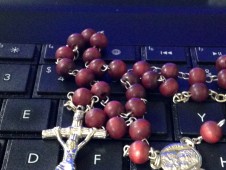So now, after the work we have done in the last few weeks, you have your character. Hopefully, you have rounded out all of the major players in your next work. You have an idea for a plot and want to get going. This is the stage of writing that I love. It is a new beginning. I am creating a new world for my reader, with setting, plot, and unique well-rounded characters. This is the stage during which most writers sit down and compose an outline. Not me! I hate outlines! If you do like to write outlines, go right ahead. However, for those who hate writing those outlines, I will teach you the best secret I ever learned for composing a novel: the story board.
Before we get started, however, let’s learn the secret of the three parts of a story. I like to think of a plot as a ‘Trinity.’ I guess because I write Christian fiction. Why am I telling you this? Because the natural and most pleasing plot has three parts. It is a formula for storytelling, joke-telling, and speech-giving that has existed since the ancient Greeks. It probably existed before that. It is an accepted framework that works. What are the three parts to a good story, joke, or speech? Plays are usually in three acts, so why don’t we call the three parts of our plot acts.
Act One: The first part of your story. It is the part that should hook your reader. In order to do that, it should introduce your basic story. Set up the conflict with a sympathetic character who is challenged in some way, and you have a ‘hooked’ reader. If you can do it in the first few sentences or paragraphs you have your hook.
Act Two: Now what? Your character has committed to a plan of action, but in this part of the novel he runs into an obstacle, or one obstacle after another. Now is the struggle, be it physical, emotional, or spiritual. Keep your reader guessing how it will turn out.
Act Three: The ending. Tie up all your loose ends. You will have numerous story lines of minor characters. Tie them all up. Your reader cares about the characters. He wants to know. You can add a little twist for interest, but never cheat your fans.

Movies and animated films have used story boards since they were first created. Cartoonists draw their story in grids that contain each frame of the cartoon. Movies use the same grid method to create the different scenes that the camera man and set designer will use. But how do authors and writers use a story board? It is a little different. First, get a board. It can be cork board, black board, or white board like mine. It can be large and hung on a wall, or created on your computer. The details are up to you. I like a large board because as I write I can turn to it and let my thoughts flow, see just where I am and how my plot is progressing. I can also look at my characters for a better sense of them.
No matter what kind of board you choose, the very first thing you will do is draw a large “W” on it. This “W” represents the flow of your plot or story. The high points of the W are the beginnings of your three acts. The downward and upward parts are the back stories of your plot, with a natural flow that guides your tale. Like a play. The “W” is not an original invention by me, it is used by many writers.
Make your characters real to you. This is the fun part. As you can see from the story board I am currently working on, I pin images and basic information about my major characters to the top of the board. I type the description of my characters into google image and search until I find an image that fits my character. If I know a famous actor or politician who looks like my character, I use their image. I print them all out in thumbnail size and pin them to the back side of an index card with their name and basic information. Now, when I look at my board, I can actually see my characters. This helps with the next stage of my story board.
In order to create my novel or story, I have to think about it in scenes. Create your story board and we will discuss the scenes next Monday.
Karen Kelly Boyce lives on a farm in NJ with her retired husband Michael. She has two grown children and two grandchildren. She is an award-winning novelist and writes a children’s series for Chesterton Press

i always wanted to know how story boards work. Thanks!
This is such a great idea! Stealing. 🙂 I do collect photos from the web of characters, but I put them in folders and hardly look.